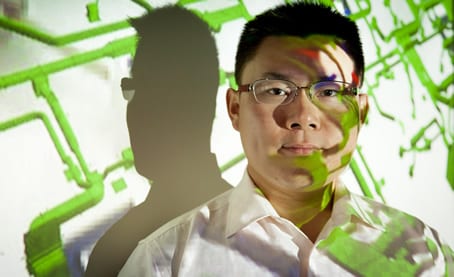While it may once have been just the stuff of pipe dreams in the 80s and 90s, a Curtin University academic is using virtual and augmented reality to take architectural design into groundbreaking new territory.
Professor Xiangyu Wang has over ten years experience in both virtual reality, in which a totally digital environment is created, and augmented reality, which sees digital information and images projected onto real-life surroundings.
“So in an office, you can see some digital, virtual joints on your wall, or you can see digital furniture lying on your floor,” Professor Wang said.
“The good thing for this is, think about construction sites: it’s very critical to control the progress of a project. If we can actually project the proposed construction progress right onto the place where it is being constructed or built, then we can immediately recognise how behind or advanced the schedule is.”
Professor Wang said while virtual reality may not be the all-encompassing part of everyday life as was once foreseen in the past, its presence is still visible.
“If you look at gaming or 3D cartoon movies, that’s all virtual reality,” he said.
“Industry-wise, I know for example Western Australia already has a virtual reality system to train safety in underground mining.”
After working around the globe and more recently at universities on the east coast of Australia, Professor Wang was recently lured west to Curtin’s School of Built Environment due to Western Australian industry’s booming need for expertise in virtual and augmented reality, and other technologies such as Building Information Modelling.
Professor Wang said augmented reality’s use in construction was expected by many to increase exponentially in the years to come.
“One prediction is that by 2014, 30 per cent of all outdoor construction workers will be equipped with some sort of augmented reality technology,” he said.
“Some people say there will be a $300 million augmented reality market. AR allows us to still work in a real space, but have digital information around you to augment the way you interact with the virtual.
“That’s very vital, because we are all living and working in the real world.”




